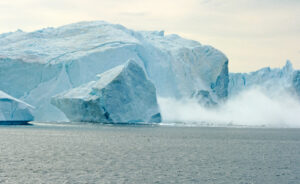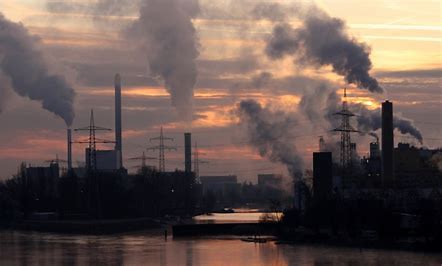Climate change is being affected by Global warming. It has gotten to the point where wildlife and marine animals are noticing the impact the temperature is having on their ecosystems. Climate change is a long-term change into Earth’s climate. Global warming temperatures is increasing as burning fossil fuels have increased the amount of greenhouse gases trapped in the atmosphere. These phrases are used interchangeably, Climate change refers to the changes in weather patterns for example sea-level rise. However, Global Warming is the warming temperatures in Earth that causes Climate change. Changes observed in Earth’s climate has affected the ecosystems where animals are endangered.
The danger of climate change is the rise of global warming temperatures. Air pollution is one of the big causes of global warning, it forms one of the biggest threats to the existence of the living organisms in our earth. It is a mix of gas with solid particles suspended in air released by car exhaust, exhaust from industries, dust, etc. The variations in ozone, water vapor, methane, nitrous oxide, and carbon dioxide all lead to changes in climate and air quality. Acidic depositions, ozone hole depletion, greenhouse gas effect is some of the changes observed in nature due to pollution.1
Climate change begins with the introduction of Fossil Fuels which include coal, oil, and natural gas burning them are what is known as greenhouse effect in Earth’s atmosphere. These greenhouse gases are made up air pollutants such as carbon dioxide (CO2), primary fine particulate matter (PM2.5), sulfur dioxide (SO2), nitrogen oxides (NOx) and ammonia (NH3), which are primarily emitted from energy‑intensive industrial sectors.2 The pollutants are what produces the greenhouse to causes hot temperatures to rise and stay in the atmosphere. The hot temperature in the atmosphere is what it is known as global warning.

Global warning affects the patterns of seasons and changes the weather patterns. But sea levels are also impacted by the melting of ice and glaciers. The Antarctic ice sheet (AIS) is the largest reservoir of freshwater on Earth and has the potential to become one of the largest contributors to sea level in the next centuries …the largest source of uncertainty in projecting sea-level rise, when compared with other contributors such as thermal expansion…recent observations have shown an acceleration in the rate of ice loss from the Antarctic ice sheet, especially in West Antarctica.3 The melting of ice and glaciers increasing sea-level rise would affect Polar bears. These artic animals are being affected by the hot temperatures that Antartica is experiencing. Polar bears depend on ice to access their primary prey, ringed seals Pusa hispida and bearded seals Erignathus barbatus. In 2008, polar bears were listed as “threatened” under the U.S. Endangered Species Act due to sea-ice loss resulting from climate change.4. Climate change is affecting the melting of ice where Polar bears use to migrate and find the prey to survive.
The need to combat pollution is necessary in order to stop hot temperatures from affecting the climate. Governments can combat the greenhouse gases by verbal communication in creating laws that could limit the dangerous chemicals in factories. As countries still use greenhouse gases, Climate change would destroy the ecosystems and cause major problems to Earth by stronger natural disasters. Countries must learn the different principles and theories of communication in order to have a goal to limit the emission of greenhouse gases and protect the endangered animals. If no change for greenhouse gases is made the end of the world is near.

- Ramadas, Meera, and Ajith Abraham. “Segmentation on Remote Sensing Imagery for Atmospheric Air Pollution Using Divergent Differential Evolution Algorithm.” Neural Computing & Applications 35, no. 5 (February 20, 2023),1. ↵
- Oberschelp, Christopher, Stephan Pfister, and Stefanie Hellweg. “Global Site-Specific Health Impacts of Fossil Energy, Steel Mills, Oil Refineries and Cement Plants.” Scientific Reports 13, no. 1 (November 20, 2023),1. ↵
- Bulthuis, Kevin, Maarten Arnst, Sainan Sun, and Frank Pattyn. “Uncertainty Quantification of the Multi-Centennial Response of the Antarctic Ice Sheet to Climate Change.” Cryosphere 13, no. 4 (April 1, 2019),1. ↵
- Regehr, Eric V., Michael C. Runge, Andrew Von Duyke, Ryan R. Wilson, Lori Polasek, Karyn D. Rode, Nathan J. Hostetter, and Sarah J. Converse. “Demographic Risk Assessment for a Harvested Species Threatened by Climate Change: Polar Bears in the Chukchi Sea.” Ecological Applications 31, no. 8 (December 1, 2021),1 ↵



2 comments
Rhys Williams
I found the discussion on climate change and its impact on ecosystems both concerning and enlightening. The quote highlighting the interchangeability of the terms “climate change” and “global warming,” while also emphasizing their distinct meanings, underscores the complexities of environmental degradation and the urgent need for action to mitigate its effects on wildlife and marine animals.
Madison Hinojosa
The insightful article effectively sheds light on the crucial connection between climate change and global warming. It underscores how the escalating temperatures are significantly impacting ecosystems, prompting wildlife and marine animals to adapt to these changes. The prevalent effects of this ongoing phenomenon have accentuated the urgency for environmental conservation efforts. Not only are natural habitats being altered, but the delicate balance of our planet is also at stake.